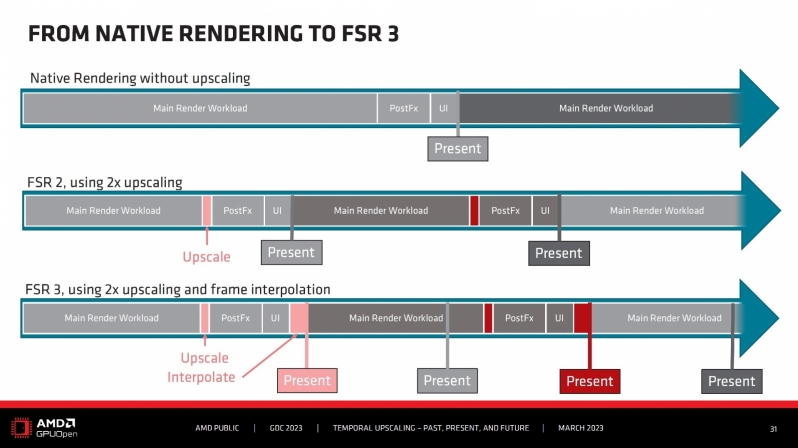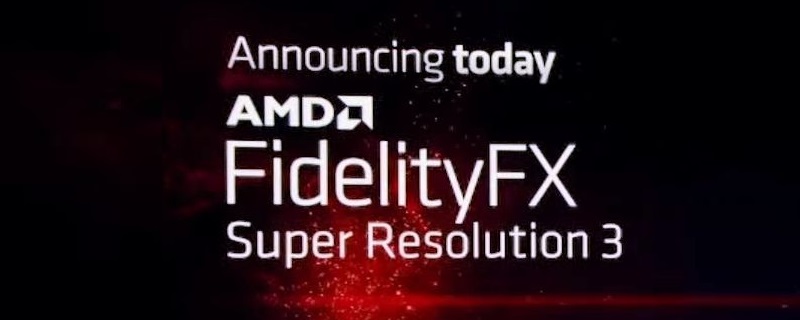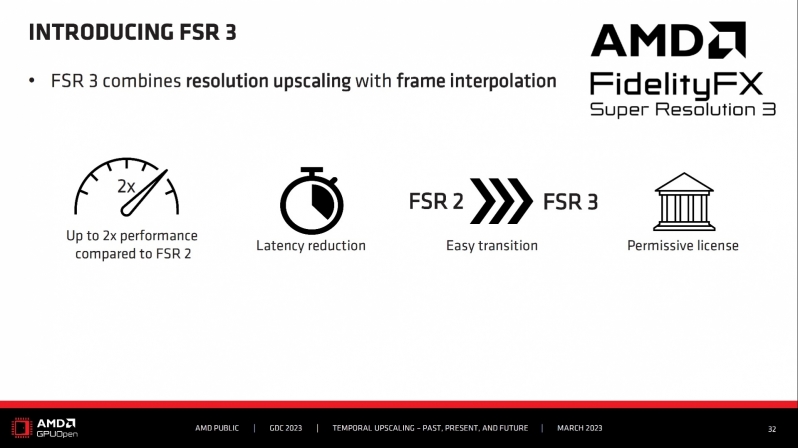AMD details FidelityFX Super Resolution 3.0 at GDC 2023
AMD promises gamers a 2x framerate boost over FSR 2 with their new FSR 3 technology at GDCÂ Â
At GDC 2023 AMD has given gamers a look at their new FidelityFX Super Resolution 3.0 technology, a new technique that adds frame interpolation into the company’s FidelityFX Super Resolution (FSR) pipeline.Â
With FSR 3.0 AMD can deliver an up to 2x performance improvement over their existing FSR 2 technology, and has promised easy game integration for titles that already support AMD’s FSR 2 upscaler.
Below is what AMD had to say about FSR 3.0 on their GPU Open post about the topic.Â
  During the last part of our temporal upscaling session, we also revealed some early information about FSR 3 and talked about the benefits and challenges in development.
With FSR 2 we’re already computing more pixels than we have samples in the current frame, and we realized we could generate even more by introducing interpolated frames. This has allowed us to achieve up to a 2x framerate boost in the process.
Frame interpolation is more complex, as there are several challenges:
– We can’t rely on color clamping to correct the color of outdated samples.
– Non-linear motion interpolation is hard with 2D screen space motion vectors, which is why we recommend at least 60fps input.
– If the final frames are interpolated, then the UI and all post-processing will also need to interpolated.However, there is good news!
– There’s a high probability there will be at least one sample for every interpolated pixel.
– There’s no feedback loop as the interpolated frame will only be shown once – any interpolation artifact would only remain for one frame.
Â
Like DLSS 3, AMD’s FSR 3 technology generates new frames by interpolating between present and previous frames, using motion vectors, internal information from FSR 2 and what AMD calls “AMD Fluid Motion” to create an accurate interpolated frames.
With FSR 3, AMD will also be focusing in decreasing the latency of games, because AMD knows that gamers desire both high framerates and responsive gameplay. Additionally, AMD has confirmed that FSR 3 will be available though an open-source MIT license, allowing developers to integrate the technology into their games with ease. 
At GDC, AMD showcased a demo where an Unreal Engine 5 game saw its framerate jump from 60 FPS with FSR 2 to 120 FPS with FSR 3 when outputting a 4K image. Sadly, AMD has not revealed when we can expect to see FSR 3.0 in games, or when the technology will be distributed widely amongst game developers.
You can join the discussion on AMD’s FSR 3.0 technology on the OC3D Forums.




